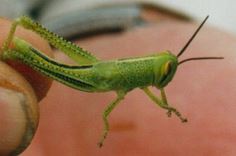Locusts and grasshoppers are active across large areas of western Queensland and NSW and central Queensland. Reports of the Australian Plague Locust, Migratory Locusts, Yellow winged locust and spur-throated locust have been received from areas around St George to the Central Highlands during January and early February.
It has been several years since we have seen such high locust and grasshopper activity, and although the Australian Plague Locust Commision (in their situation report and forecasting) is not predicting a plague, their predictions of locally high activity seem to be accurate. In affected areas, there is the risk significant crop and pasture loss, with a number of sorghum crops treated already to limit defoliation.
For information on locust and grasshopper identification, lifecycle and distribution these are useful resources:
Spur-throated locust Factsheet (NSW DPI)
On-line locust and grasshopper identification guide (Australian Plague Locust Commission (APLC))
The Australian Plague Locust Commission issues situation reports and a Locust Bulletin. The most recent Bulletin was produced in January 2015. You can read the detailed descriptions of locust activity and predicted activity in the APLC situation report and forecasts.
If control is warranted to prevent crop loss, fipronil is an effective option now available for use in sorghum at extremely low rates (6.25 mL/ha (200 SC) and 1.5 g/ha (800 WG) applied directly onto hoppers or winged adults. Applying insecticide to provide a barrier around crops is also an option. It is critical that you read the label, particularly in relation to water rates for application, the impact of rainfall and withholding periods for harvest/grazing/slaughter.
Permits are also in place for locust and grasshopper control with a number of synthetic pyrethroids (PER10927 and PER10928).
Report locust and grasshopper activity in Queensland to Biosecurity Queensland on 13 25 23.
To report locusts in NSW please contact Local Land Services www.lls.nsw.gov.au/contact-us
For more information on locusts in NSW, visit the Primary Industries website

